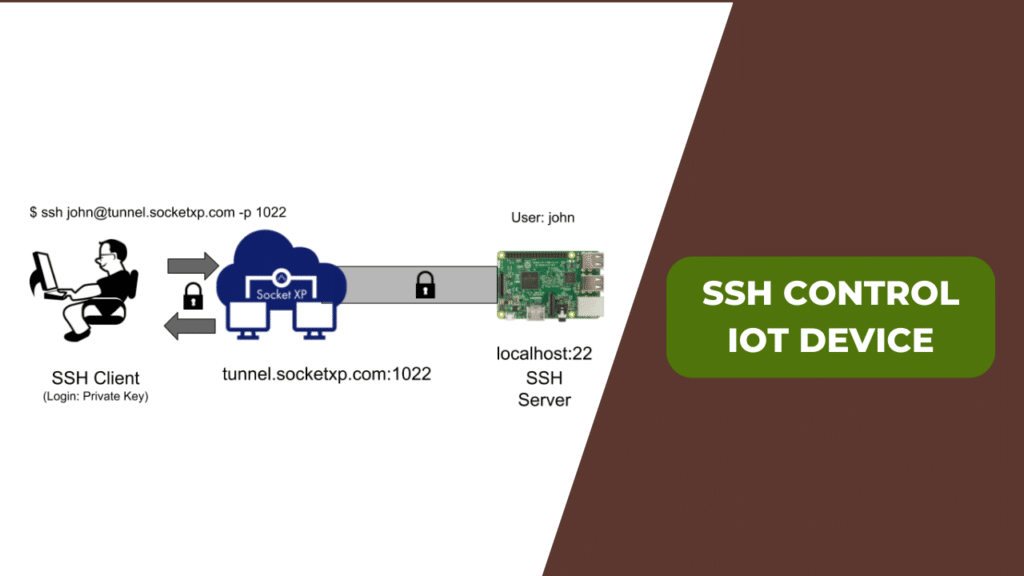Securing The Future: The Critical Role Of SSH In IoT Device Protection
The Internet of Things (IoT) continues to redefine daily life, integrating technology into our homes, workplaces, and industries. From smart home assistants to industrial sensors, IoT devices promise convenience, efficiency, and innovation. However, this rapid expansion also brings significant security challenges. Among these, Secure Shell (SSH) vulnerabilities stand out as a critical concern. SSH, a protocol central to remote administration and secure data transfer, often becomes a weak point when improperly configured. The growing reliance on IoT devices makes securing SSH access not just a technical necessity but a fundamental requirement for safeguarding interconnected systems.
IoT devices operate across a wide spectrum, from simple household gadgets to complex industrial machinery. This diversity introduces unique security complications. Many devices come equipped with default SSH credentials that users rarely change, leaving them exposed to unauthorized access. Weak cryptographic algorithms and outdated implementations further exacerbate the problem. The distributed nature of IoT deployments complicates security management, requiring a comprehensive strategy that includes strong authentication, encryption, and regular audits. The stakes are high, as compromised devices can disrupt networks, steal sensitive data, or even cause physical harm in critical infrastructure.
| Category | Information |
|---|---|
| Name | Dr. Alistair Murdoch |
| Field of Expertise | IoT Security, SSH Vulnerabilities, Network Security |
| Current Affiliation | Principal Security Consultant, CyberTech Solutions Ltd. |
| Education | PhD in Computer Science, University of Cambridge MSc in Information Security, University of Oxford BSc in Computer Engineering, Imperial College London |
| Career Highlights |
|
| Professional Memberships |
|
| Contact Information | alistair.murdoch@cybertechsolutions.com |
| Website/Reference | CyberTech Solutions Profile |
The Mirai botnet incident exemplifies the potential consequences of neglecting SSH security in IoT devices. By exploiting default credentials, attackers managed to compromise hundreds of thousands of devices, using them to launch crippling DDoS attacks. Such events highlight the urgent need for robust security measures. In addition to technical solutions, fostering a culture of security awareness among users and administrators is essential. Organizations must prioritize training programs that educate employees about SSH risks and best practices.
As IoT ecosystems expand, the complexity of securing them increases exponentially. Heterogeneous devices from multiple manufacturers pose significant challenges. Each device may follow different security protocols, making uniform management difficult. Legacy devices, no longer supported by manufacturers, remain vulnerable to known exploits. Standardization efforts are crucial to ensure consistent security across the board. Collaboration between industry stakeholders, including manufacturers, operators, and researchers, is vital to address these challenges effectively.
Supply chain security represents another critical area of concern. Many IoT devices are manufactured by third-party vendors, often located in different regions. This complicates the process of ensuring the integrity of devices throughout their lifecycle. Malicious actors could exploit vulnerabilities introduced during manufacturing or distribution. Rigorous vetting processes and stringent security practices must be implemented at every stage of the supply chain to mitigate these risks.
Data privacy remains a cornerstone of IoT security. Devices collect vast amounts of sensitive information, ranging from personal details to health records. Protecting this data from unauthorized access and misuse is paramount. Techniques such as data encryption, access control, and minimization help safeguard privacy. Compliance with regulations like GDPR and CCPA is also necessary. Organizations must be transparent about their data collection practices and provide users with control over their information.
- Burden Of Truth A Legal Drama Watch Buy Now
- Lesli Margherita Daniel Stafford Facts Marriage More Explained
Human error continues to be a significant vulnerability in IoT security. Users may overlook security protocols or fall victim to social engineering tactics. Phishing attacks, for instance, can trick individuals into revealing sensitive information or granting unauthorized access. Regular training sessions and clear security policies can help combat these issues. Organizations should empower users with the knowledge and tools to protect themselves against cyber threats.
Automation plays an increasingly important role in managing IoT security. Security Information and Event Management (SIEM) systems enable real-time monitoring and analysis of device activity, identifying potential threats. Intrusion Detection Systems (IDS) and Intrusion Prevention Systems (IPS) help block malicious traffic. Vulnerability scanners assist in uncovering weaknesses before they can be exploited. These tools enhance the ability of organizations to detect and respond to security incidents promptly.
Artificial intelligence (AI) and machine learning (ML) are revolutionizing IoT security. AI algorithms can detect anomalies in device behavior, predicting potential threats before they escalate. They can also automate response mechanisms, reducing the burden on security teams. For example, AI can identify compromised devices based on unusual network patterns or predict which devices are most vulnerable to attacks. Implementing AI-driven solutions enhances the proactive management of IoT security.
Regulatory frameworks for IoT security are evolving rapidly. Governments worldwide are establishing guidelines to address the unique challenges posed by IoT devices. These regulations may mandate specific security features or compliance with recognized standards. They may also require transparency in data handling practices. Organizations deploying IoT devices must stay informed about these regulations to ensure compliance and avoid legal repercussions.
The integration of cloud computing into IoT operations introduces additional security considerations. Many devices rely on cloud platforms for data storage and processing. Protecting these connections is essential to safeguard sensitive information. Cloud providers must implement robust security measures, while organizations must adopt practices such as encryption and access control to protect their data.
Edge computing represents another emerging trend in IoT. By processing data closer to its source, edge computing reduces latency and enhances performance. However, it also creates new security risks. Edge devices, often located in remote or unattended areas, are susceptible to physical attacks. Limited resources may hinder the implementation of comprehensive security measures. A multi-layered approach, combining physical security, authentication, and encryption, is necessary to protect edge devices.
Developing new security protocols and standards is imperative to address the evolving threat landscape. Secure communication protocols and privacy-preserving technologies are essential for safeguarding IoT devices. Standardization ensures interoperability and promotes consistent security practices. Collaboration among industry, academia, and government is crucial to drive innovation and establish robust frameworks.
Quantum computing poses a potential threat to current cryptographic methods. Quantum computers could break many of the encryption algorithms used today, compromising IoT security. Developing quantum-resistant algorithms is a priority for researchers. Organizations should plan for the transition to these new methods to ensure long-term protection of their IoT deployments.
The future of IoT security depends on addressing existing vulnerabilities while preparing for emerging threats. A proactive, multi-faceted approach combining technical measures, organizational policies, and user awareness is essential. By prioritizing security and fostering collaboration among stakeholders, we can unlock the full potential of IoT while safeguarding against cyber risks.



Detail Author:
- Name : Shyann Fadel
- Username : elenora76
- Email : dgleason@mcclure.info
- Birthdate : 1996-05-04
- Address : 53445 Hettinger Parkway Deeton, RI 85807-6913
- Phone : 680.632.7624
- Company : Yundt, Carroll and Kuhlman
- Job : Transformer Repairer
- Bio : Sunt cupiditate rerum ut facilis qui. Enim libero quis et non enim alias. Minima blanditiis soluta soluta voluptatum beatae consequuntur.
Socials
twitter:
- url : https://twitter.com/larue.schultz
- username : larue.schultz
- bio : Voluptatem et atque sit sit ut eum. Quos totam et voluptas fugiat et incidunt dolorum. Ea aliquid quaerat eius sint deserunt. Sit nihil quod in eaque.
- followers : 4395
- following : 1801
linkedin:
- url : https://linkedin.com/in/larue_schultz
- username : larue_schultz
- bio : Sint quia distinctio quo quis nisi aut qui.
- followers : 1945
- following : 496
facebook:
- url : https://facebook.com/schultzl
- username : schultzl
- bio : Voluptatum quia eaque asperiores omnis impedit excepturi.
- followers : 6073
- following : 1413
instagram:
- url : https://instagram.com/larue_schultz
- username : larue_schultz
- bio : Minus id consequuntur assumenda velit. Soluta adipisci et impedit assumenda rerum.
- followers : 5885
- following : 2438
tiktok:
- url : https://tiktok.com/@larue1557
- username : larue1557
- bio : Omnis eaque placeat voluptas dignissimos magni tempore a sit.
- followers : 5488
- following : 132